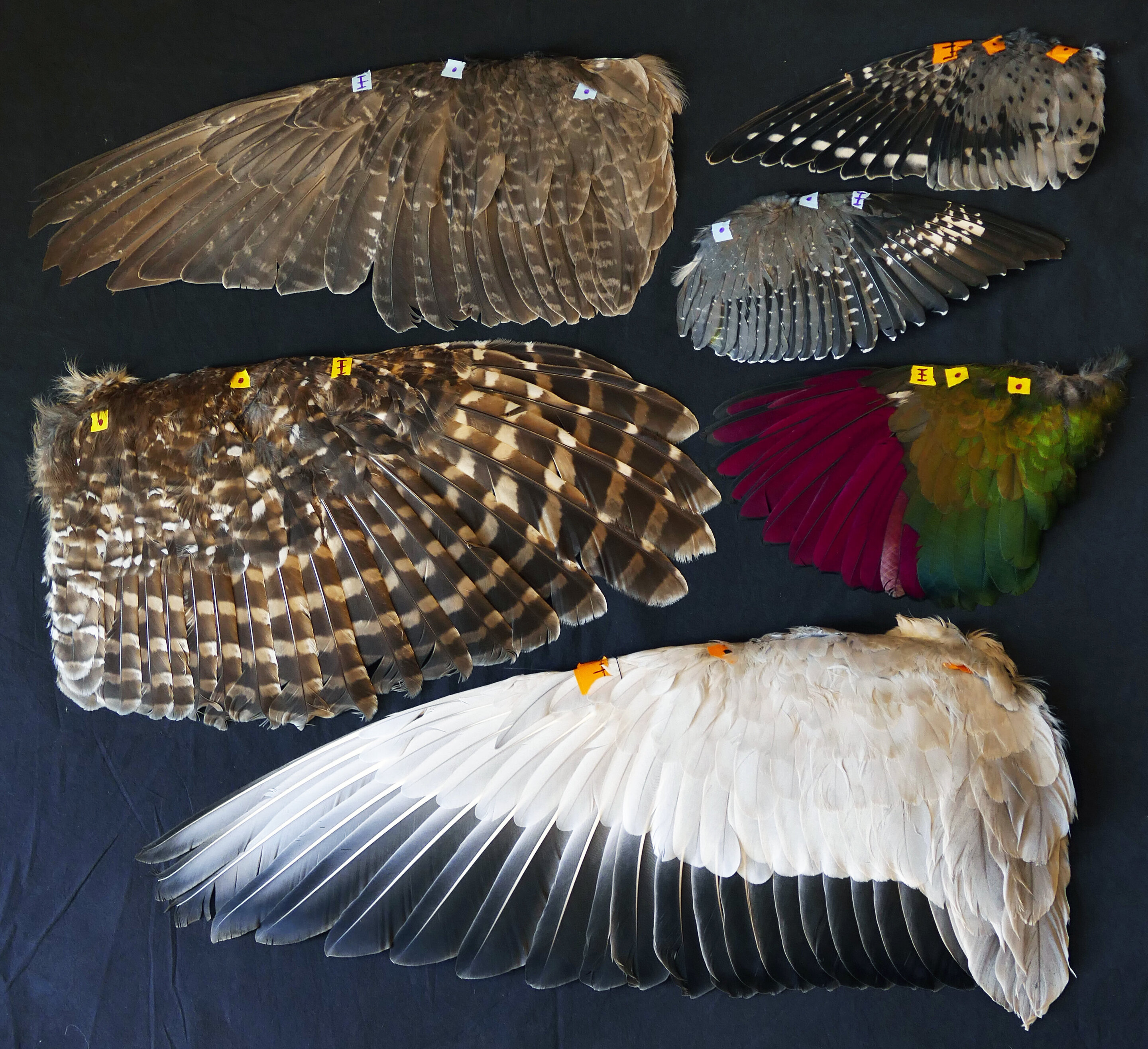Why are bald eagles such great gliders? It's all in the wrist
https://phys.org/news/2019-10-bald-eagles-great-gliders-wrist.html
Spread wings from (top to bottom) a gyrfalcon (Falco rusticolis), American kestrel (Falco sparverius), belted kingfisher (Megaceryle alcyon), red-tailed hawk (Buteo jamaicensis), red-crested turaco (Tauraco erythrolophus), and bar-headed goose (Anser indicus). Specimens from the University of British Columbia's Beaty Biodiversity Museum. Credit: Vikram Baliga, University of British Columbia
Paper: Range of motion in the avian wing is strongly associated with flight behavior and body mass
https://advances.sciencemag.org/content/5/10/eaaw6670
Wing range of motion is more strongly associated with flight behavior and body mass and is more evolutionarily labile than wing shape.
(A) Effect sizes (Cohen's f2) for each of the fixed effects considered. Increasingly positive effect sizes indicate that the addition of that variable substantially improved variance explained; increasingly negative indicates the opposite. Flight behavior or body mass did little to explain wing shape. Flight behavior has a pronounced effect in explaining extension/flexion patterns, whereas body mass substantively explains trends in bending and twisting capability of the hand-wing. Density plots show distributions of f2 as phylogeny is varied. Asterisks indicate that analyses were restricted to four well-represented flight behavior groups. (B) Range of motion traits (purple) have lower phylogenetic signal (Blomberg's κ) than those related to static morphology or flight behavior. A κ value of 1 indicates strong phylogenetic signal that ostensibly follows Brownian motion. Traits with κ values increasingly greater than 1 are more phylogenetically conserved; κ values increasingly lower than 1 indicate greater lability. We performed two sensitivity analyses: one in which phylogeny was varied (dashed distributions) and one in which data were jackknifed (solid).

 Author
Topic: New developments in the field of science (Read 759776 times)
Author
Topic: New developments in the field of science (Read 759776 times)
